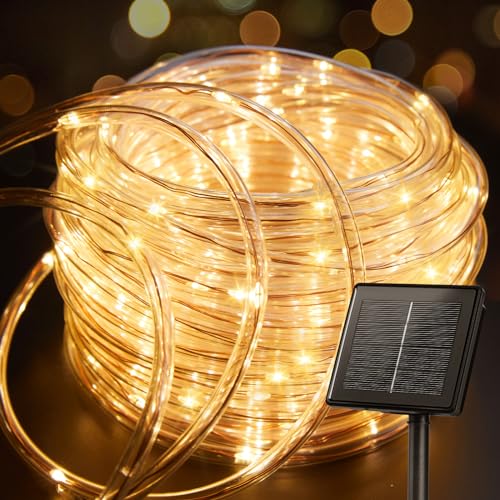Rope lights vs string lights – experts reveal which is best for your yard
I spoke to lighting experts to get the lowdown on rope lights vs string lights
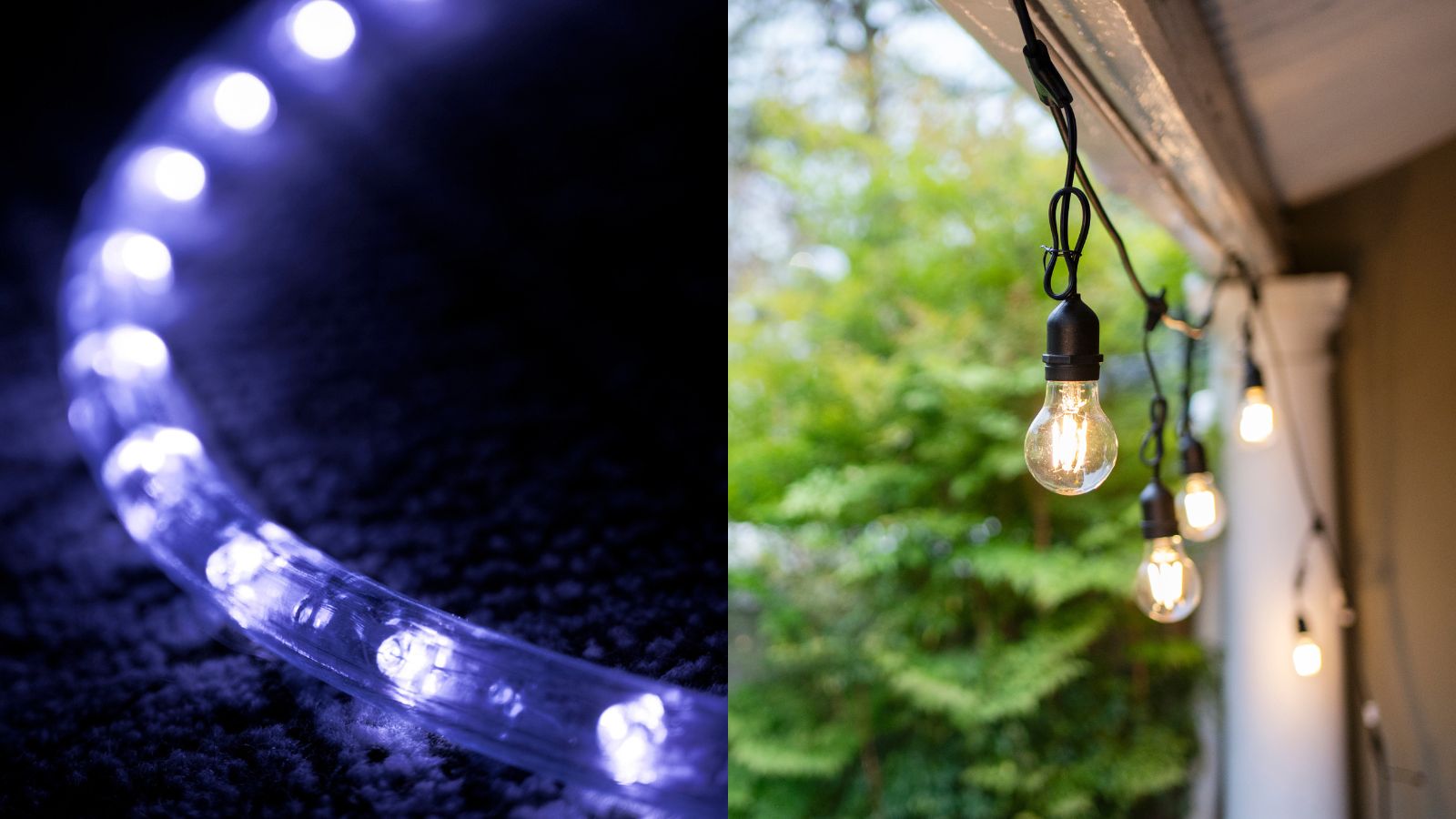

Despite similar names, rope lights and string lights are very different lighting solutions. One offers an invisible, clean, modern light fixture; the other, a relaxed, bohemian ambiance.
As a product tester, I've tried plenty of sets of both, and both types of lighting have a lot to recommend them. Rope lights are great for lighting paths and eaves, whereas string lights can't be matched for setting a scene on a patio.
But which is best for your backyard? I spoke to lighting experts about the different ways to use these lights, and which is best suited to your home.
What's the difference?
The two types of light have similar names, but they're quite different in one key aspect. Rope lights are strings of LEDs encased in a thick, transparent, plastic rope. Unlike string lights, where the lightbulbs are all separate, in rope lights they're one continuous line, making for more even light coverage.
Rope light benefits
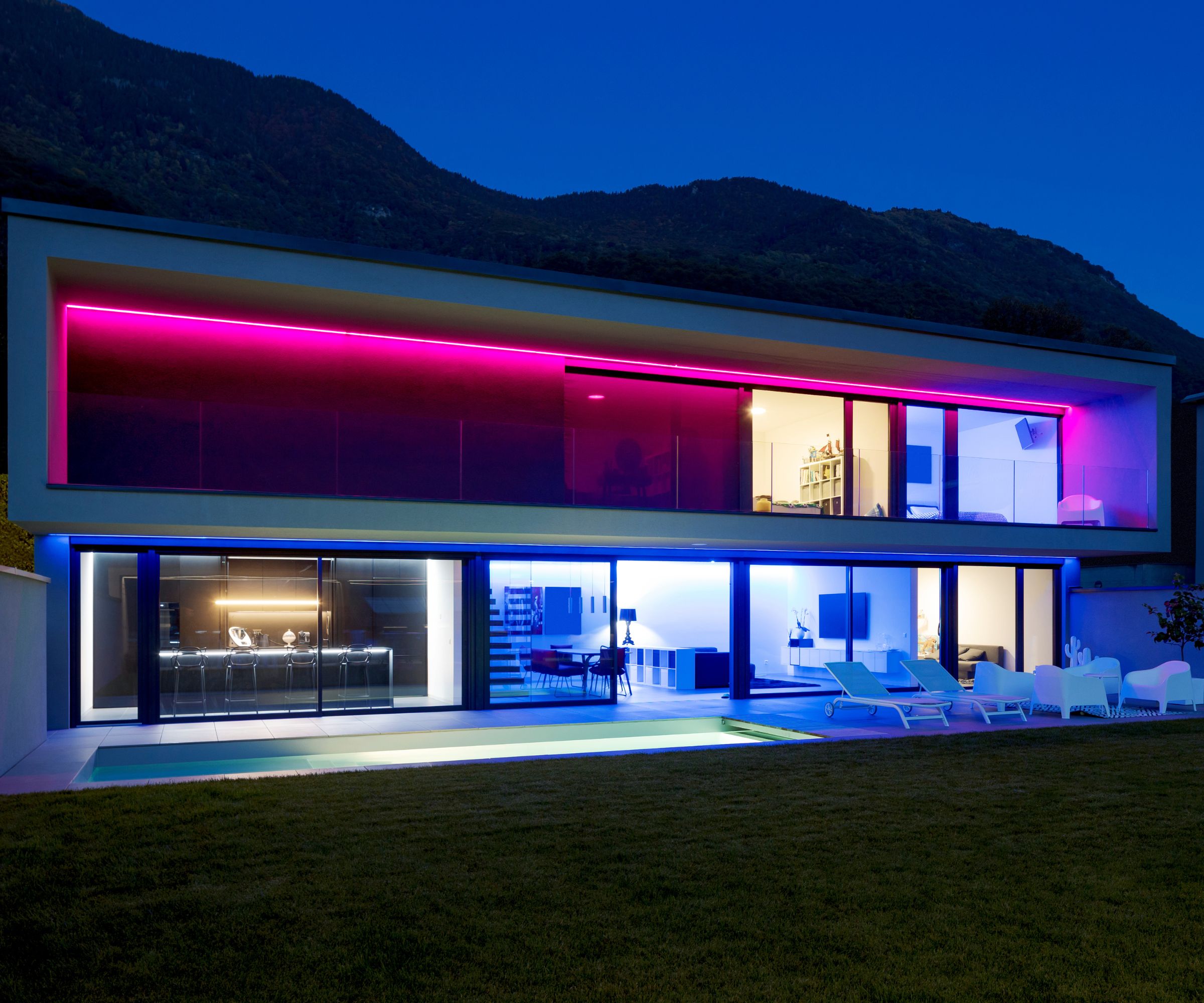
The first benefit of rope lights is that they tend to be a little brighter than string lights, which often mimic old tungsten filaments for style, but not practical lighting.
Rope lights also give out solid, unbroken light. Unlike string lights, which dangle between two fixed points for a relaxed look, rope lights offer even, consistent lighting. Lighting expert Joel Worthington told me 'Rope lights are good for outlining structures like decks, pathways and stairs.'
Joel summed up the benefits of rope lights in two words: 'flexibility and versatility'. Unlike string lights, you can use rope lights low to the ground. They look especially good behind flowerbed edging, creating soft uplighting that looks like it's coming up out of the ground.
This also means that you can use them as an inventive, easy way to light paths and walkways. Rather than spending hundreds on several individual path lights, you can trail a set of rope lights next to the path.
They're also perfect for lighting under eaves, like cabinet lighting. You can run rope lights under your eaves out of sight, creating lighting with no visible fixture.
On top of that, rope lights are more durable than string lights. They're similar products, but the thick plastic encasing rope lights means that it's hard to damage the wires and filaments.

Joel is an elecrical expert and oversees operations of 170 North American franchise locations and international master franchisees. Established in 1994, Mr. Electric is a global franchise organization providing electrical installation and repair services.
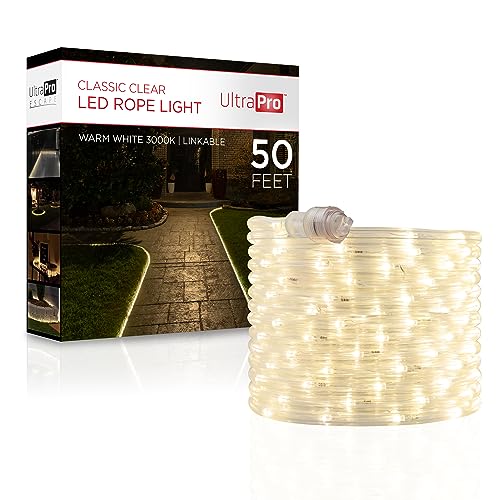
These are the archetype of good rope lights, a long 50ft length of warm white LEDs embedded in plastic.Best of all, these are connectable. If you need 50 feet, you can link these up with another set for extra light.
Rope light drawbacks
The first drawback of rope lights is aesthetic rather than practical. They look pretty futuristic, so while they're great for modern, contemporary homes, they won't work for older, more traditional ones. Lighting expert Dara Greaney told me that 'The main difference between rope or strip lights vs string lights is that in the former the light is continuous, designed to look almost like neon. In string lights, there are lots of lights but they are meant to be distinct, which gives it that old-world relaxing feeling.
On top of that, there are more practical concerns. While they look great hidden behind fixtures, this can be tricky to pull off. Dara adds that 'Rope lights are harder to install, as they have to be hidden behind soffits, under eaves, or under stairs.' String lights are easy - while the best way to install them is a little time-consuming, you can get away with wrapping them around the beams of a pergola or stringing them from tree to tree.
Another practical issue is that rope lights are dimmer than other types of lighting. Joel Worthington says 'Compared to other lighting, rope lights tend to be less bright.' On top of that, unless you buy expensive lights, you're limited to a golden glow. Joel adds that 'Depending on the type, the color of the lights may be limited compared to other decorative lights.'
Rope lights are often too heavy for some types of decoration. One of the best ways to create garden ambiance is to drape string lights over shrubs. You can't do this with rope lights, because the rope is too thick and heavy.

Dara Greaney is the CEO and President of LEDLightExpert.com, a leading company in commercial lighting solutions. During that time LED Light Expert has sold hundreds of millions of dollars worth of LED Lights. Greaney has extensive expertise in lighting design, LED technology, and fixture design.
String light benefits

String lights are perfect for creating ambiance in social areas, not practical path lighting or flowerbed uplighting. Joel Worthington says 'String lights are best for homeowners looking to create decorative ambiances. String lights provide softer lighting that works well for lighting trees and decks.'
If you have a shrub in a dark corner of the yard, a set of string lights add gentle, fairy tale light. They can also function as festive lighting.
Unlike rope lights, which only work for modern homes, string lights can complement any style of home, with Edison bulbs for more traditional homes and simple, clean bulbs for more modern builds.
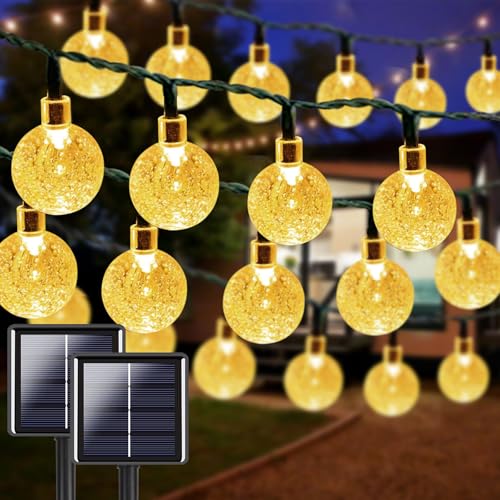
I first tested them a few years ago and they still work - they've switched on at the same time every evening for years. Offering ambiance rather than practical lighting, they have eight different light patterns to suit different backyards.

These Brightech lights are at the top of most product testers' lists of the best solar lights. Many reviewers have found that their lights have lasted for the best part of a decade, and the filament makes these lights look more traditional than others.
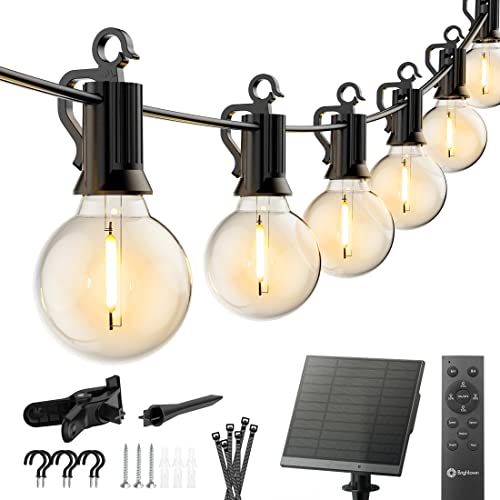
These Brightown lights come with a remote control which is rare for solar lights at this price point and makes them much easier to use. It means you can change the pattern on your lights without even stepping into the garden. On top of that, they come with a mounting kit to make set up easy.
String light drawbacks
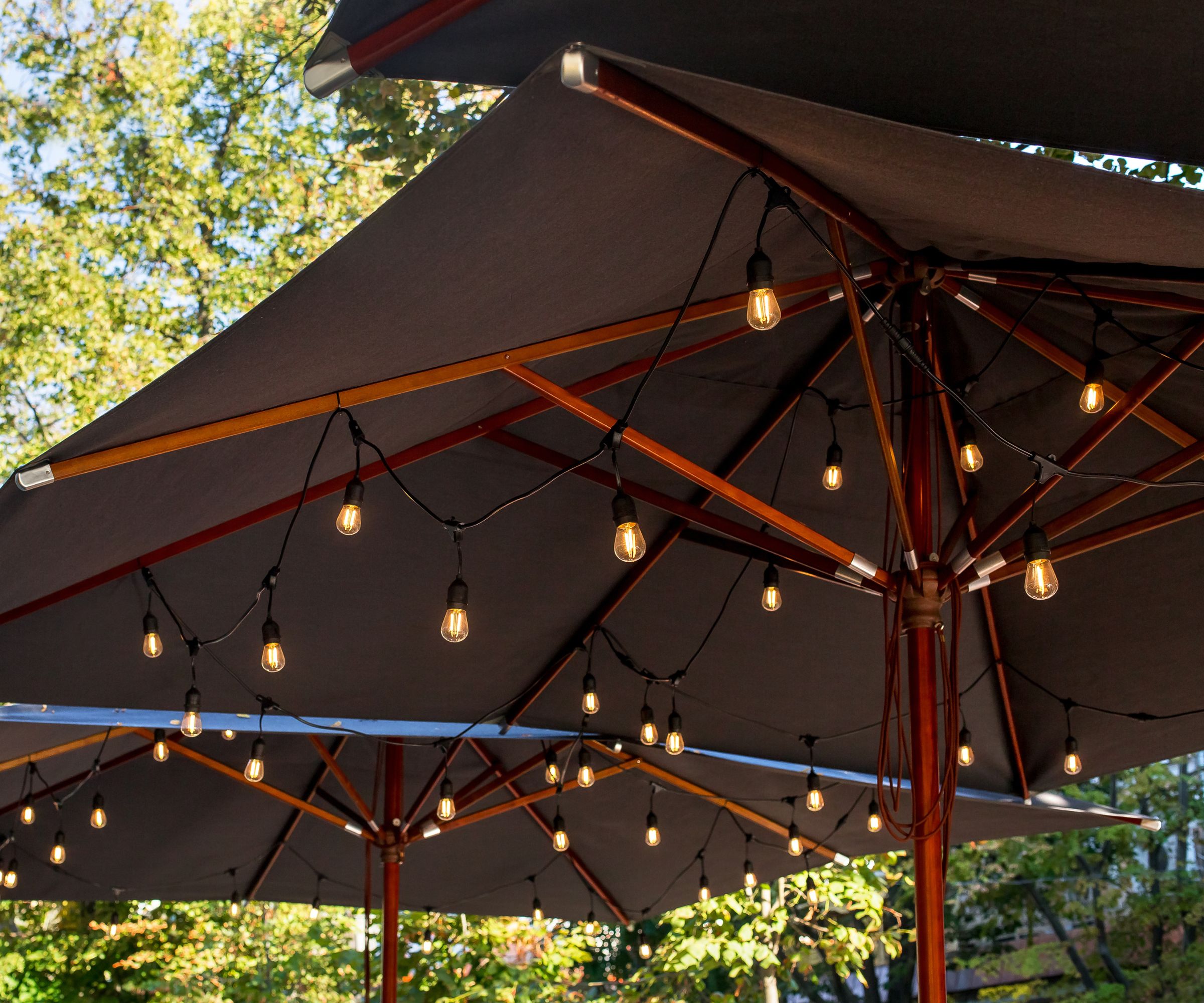
While string lights can be easy to install if you just hang them from trees, properly installing them over a patio or path can be just as tricky as using rope lights. Securely hanging string lights means installing metal wire to support their weight and keep them still in the wind.
String lights are easier to break than rope lights because the wire is exposed, and they have glass or plastic bulbs over their filaments which can crack if the wind knocks them into a wall or tree. Joel Worthington says that string lights have 'limited durability with less expensive models.'
It's a difference of cents, but if you go for traditional wired string lights with Edison filaments, or faux elements, you might find that your string lights are a little more expensive than running rope lights. Joel told me that ' non-LED lights tend to use more electricity,' and while it isn't a huge difference, over time it adds up.
You also can't use string lights for floor lighting. String lights are only suitable for overhead lighting, so you can't use them for lighting pathways or stairs.
Rope lights can also be a clever way of lighting a driveway, marking out the edges of your drive when you arrive home in the dark. You just need to be careful how you go about it. Learning where to place your lights to avoid light trespass is will keep you on the right side of the law.
Sign up to the Homes & Gardens newsletter
Design expertise in your inbox – from inspiring decorating ideas and beautiful celebrity homes to practical gardening advice and shopping round-ups.

As a gardens and lifestyle contributor, Alex makes sure readers find the right information to help them make the best purchase. Alex got his start in reviewing at the iconic Good Housekeeping Institute, testing a wide range of household products and appliances. He then moved to BBC Gardeners’ World Magazine, assessing gardening tools, machinery, and wildlife products.
-
 Reese Witherspoon upgraded a small corner into a cozy reading nook – designers say you can replicate her 'ultimate little escape' (from $18)
Reese Witherspoon upgraded a small corner into a cozy reading nook – designers say you can replicate her 'ultimate little escape' (from $18)'It’s all about comfort, calm, and just the right amount of cozy': You only need three things to follow Reese's example – and it's not only for book lovers
By Megan Slack
-
 Can my neighbor paint their side of my fence? Here's the legal regulations you need to know to avoid disputes, plus when to take action
Can my neighbor paint their side of my fence? Here's the legal regulations you need to know to avoid disputes, plus when to take actionThere's no simple answer to this question, so it's important to do your research before taking action
By Tenielle Jordison
